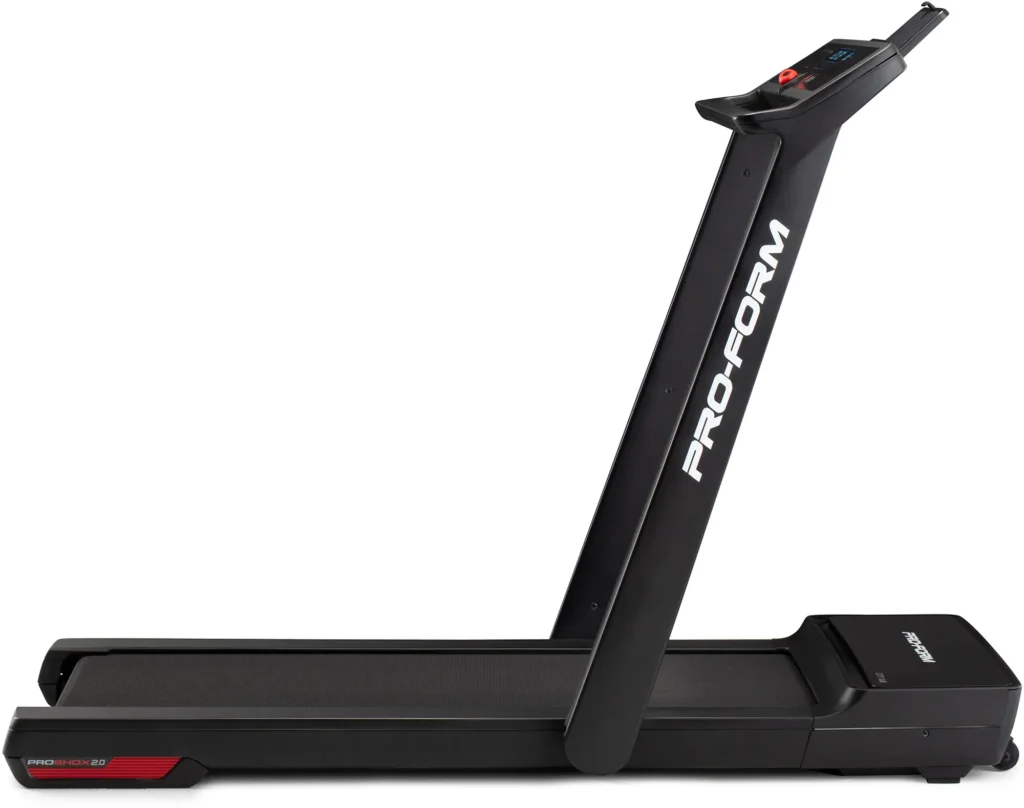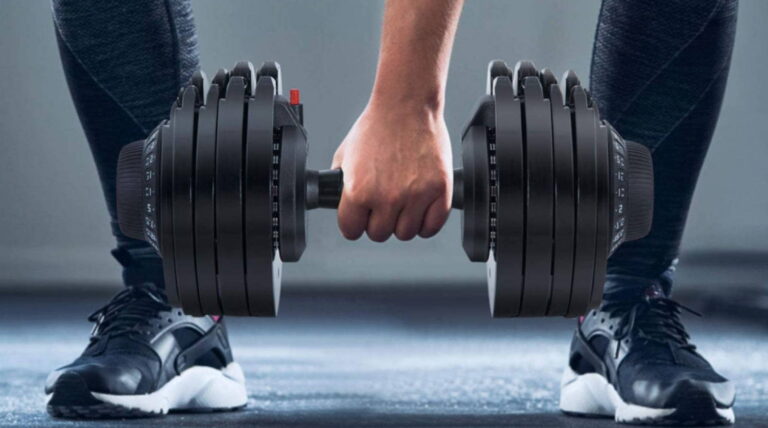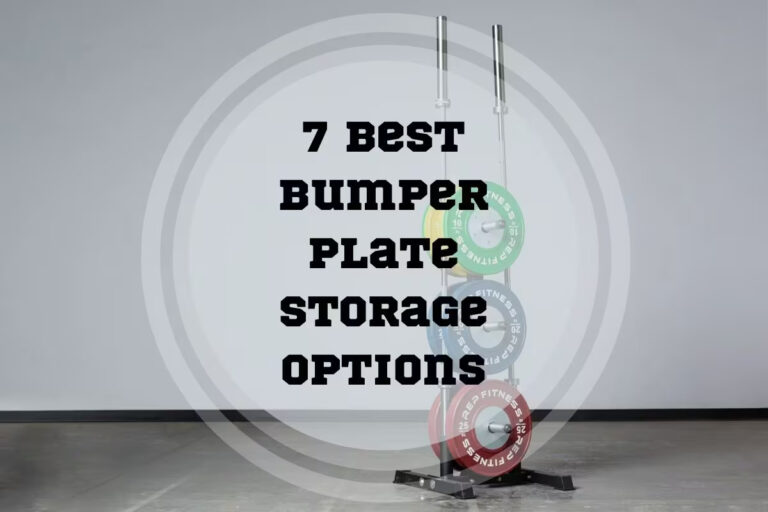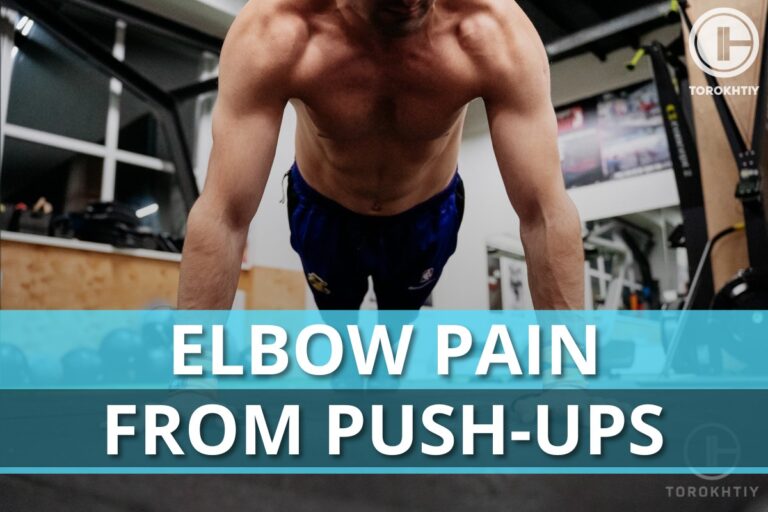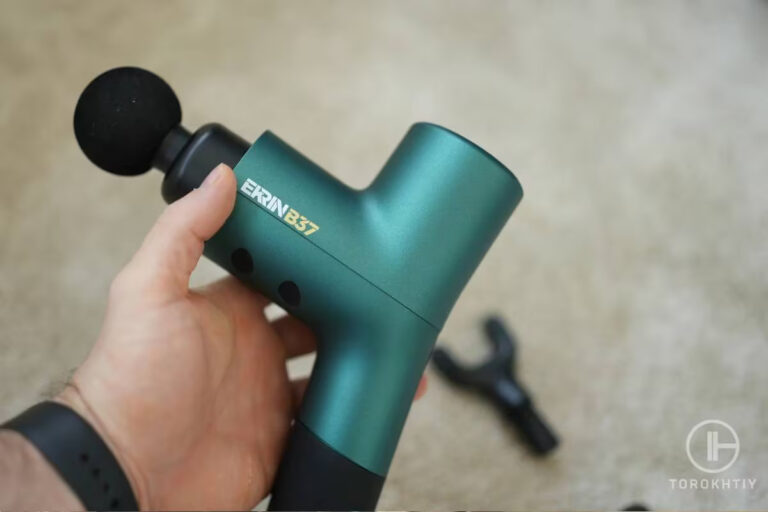How to Adjust a Treadmill Belt in 8 Steps?
Reviewed by: Oleksiy Torokhtiy (21 years of Oly Lifting experience)
I’d say that how to adjust a treadmill belt is the second thing you should learn when you get it. First, learn how to use it. Then, learn how to take care of it.
Treadmills are crazy popular, and I don’t think there’s anyone that hasn’t at least heard of them. If you enter a gym at any time, you’ll see that a lot of treadmills are occupied. If you have a home gym, I’m sure there’s a treadmill in it. Or even if you don’t have a complete home gym, there’s a good chance you have one or two pieces of gym equipment – if you do, I’m guessing there’s a treadmill in your living room.
You want to buy a quality treadmill, so that’s probably going to be an investment because they’re up there in terms of price. If you invest in something, it’s good to learn how to take care of it. You don’t want it breaking on you, do you? Well, that’s why I’m here so let’s see how to recognize when the belt is acting up and how to tighten the treadmill belt or make it looser!
Let’s tighten things up!
How to adjust a treadmill belt? The first thing you need to do is to find the rear roller bolts (at the back of your treadmill). You’ll need an Allen wrench to tighten or loosen them. After you’re done, make sure to test it before you actually use it.
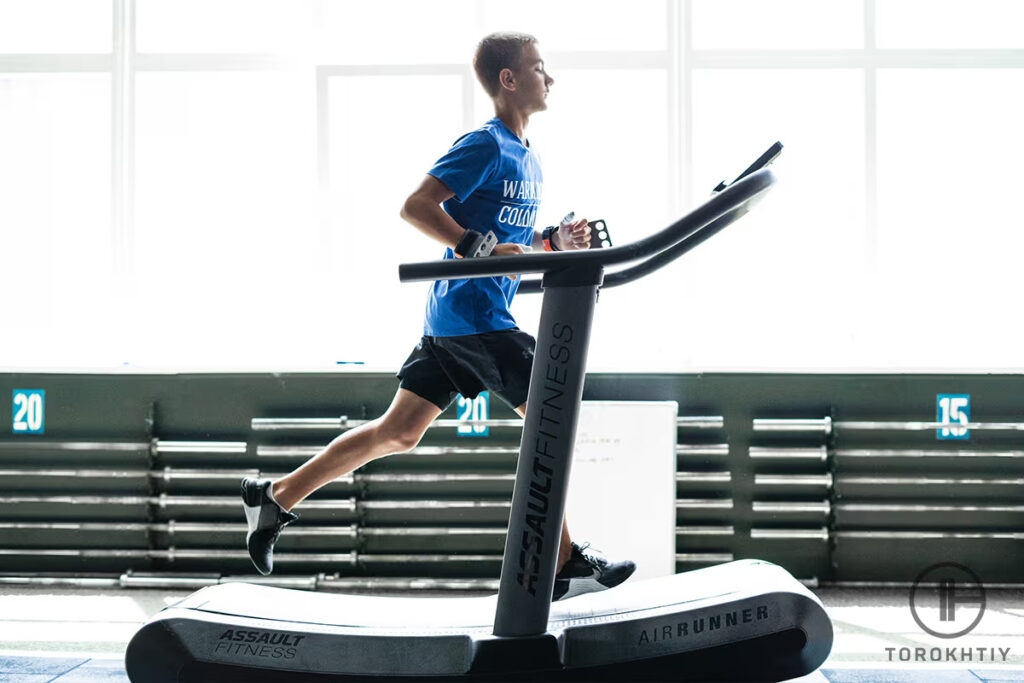
Importance of a Well-Adjusted Treadmill Belt
If you find yourself with a wobbly belt on your treadmill, you might be thinking to yourself that it’s fine, that you’ll deal with it tomorrow (the tomorrow that never comes), or that you’ll use the warranty package to deal with the annoyance.
Well, I’m here to tell you why it’s very important to keep good maintenance on your treadmill’s belt, so that you feel more motivated to fix the problem if you ever find yourself in this type of situation.
1. Smooth Workouts
Treadmill workouts are very good for you and we all want them to be smooth, safe, and seamless. If your treadmill belt isn’t adjusted, then you’re very likely to experience some jerky and uneven movements. Not only can that ruin your workout and annoy you, but it can actually lead to injury. Aligning the treadmill belt keeps you safe and makes your workouts comfortable.
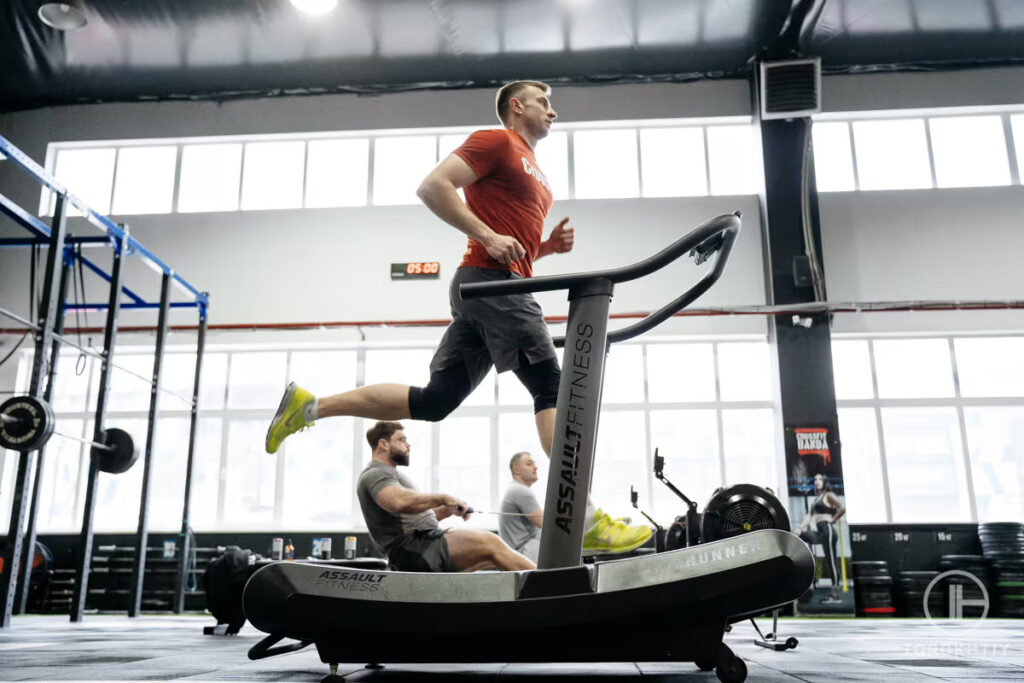
2. Longer Lifespan
Treadmill belt adjustments can prolong your treadmill’s lifespan. If the belt is aligned, then there’s no excessive wear and tear on the motor and other parts of the treadmill.
3. Performance
To cut it short – your treadmill will perform better if the belt is adjusted. The motor will run how it’s supposed to, and the speed and incline will be consistent.
4. Less Noise
Treadmills can be quite noisy, especially when the belt gets loose. Adjusting it reduces that excessive noise and makes your workout more comfortable for you, and also for the people living with you.
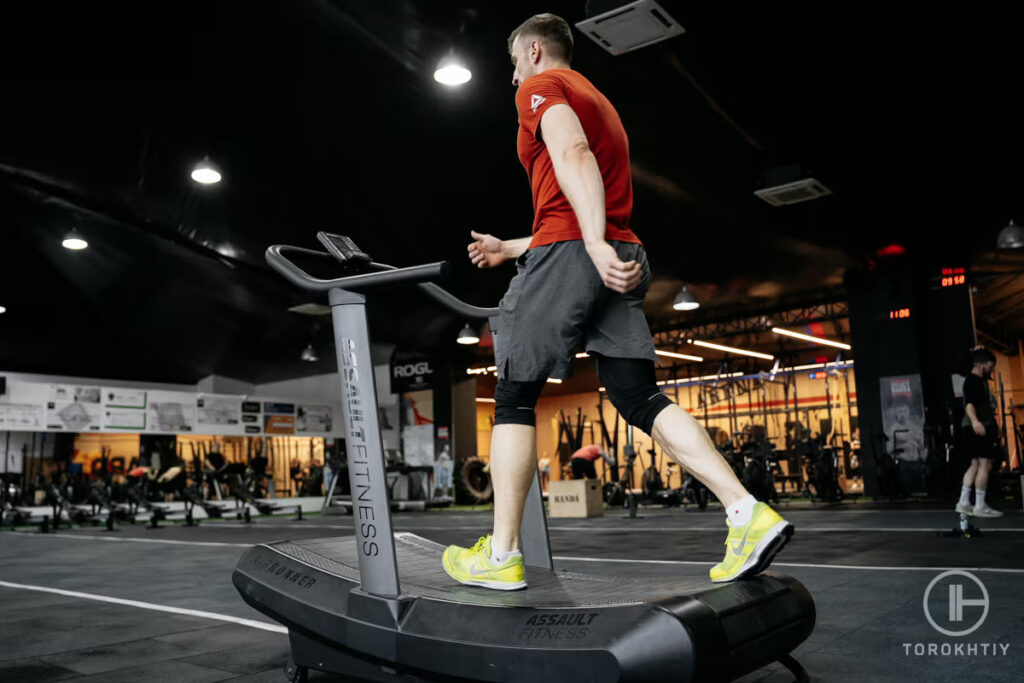
5. Better Workout
Can you imagine running on a treadmill when the speed is uneven, has jerky movements and the incline is inconsistent? It’s not a pretty picture, or a good workout. Do yourself a favor and make sure your belt is adjusted so you can focus on your workout and reap all the benefits a treadmill has instead of your treadmill acting up.
6. Accurate Metrics
Metrics are super important and are even used for research, but an improperly aligned belt can mess them up – so keep the belt adjusted. This is especially important if you use fitness apps.
Tips From the Champ
The surface you’re running on is another great thing about it because it’s low impact. This means that it’s nice to your hips, knees, and ankles and it’s good to use even if you have issues with your joints. The belt is 45’’ in length when wrapped around the running surface. It’s also 17.5’’ wide – which is plenty.
Olympic Weightlifting Champion
5 Signs of an Improperly Adjusted Belt
Now you know why it’s important to have the belt aligned. But if you’re new to treadmills, you’re probably wondering how to even recognize something’s wrong with the belt. Keep reading because I have a list of things to look out for.
1. Slipping
If the belt is not adjusted, this is probably one of the first signs you’ll notice – the belt will slip or move sideways. You may feel like you’re losing your footing, or the belt can seem like it struggles to keep the pace up. If you notice any of these things, it’s time to make some adjustments.
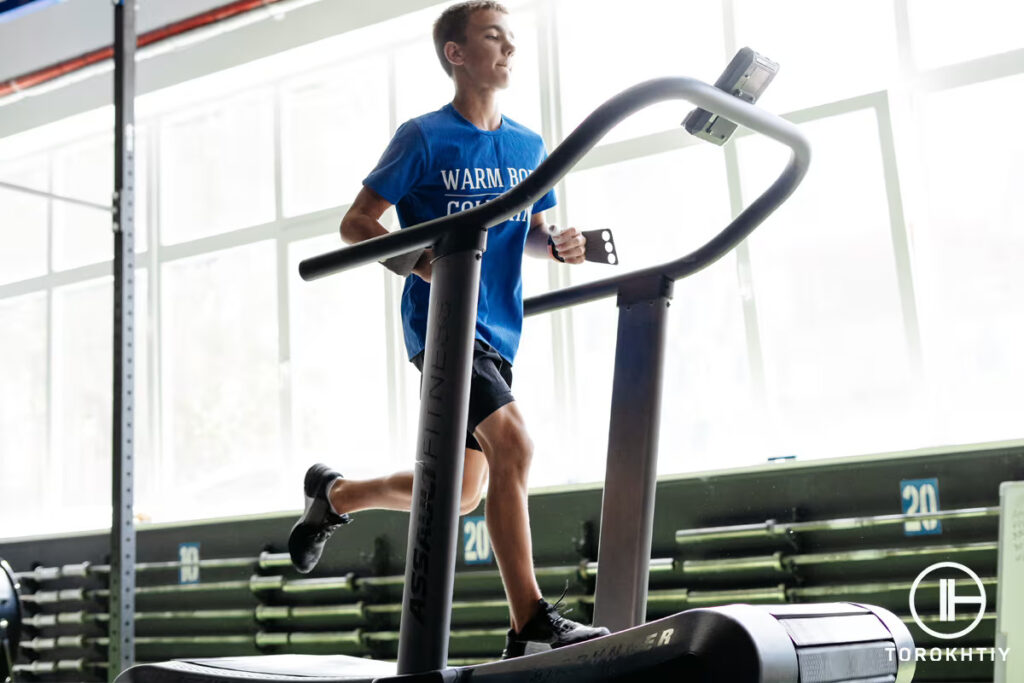
2. Too Much Noise
Treadmills can be noisy, but there’s a difference between normal noise and excessive noise. If your treadmill is louder than it usually is, check the belt and see if it needs some help to get back to working properly.
3. Weird Movement
When the belt is too loose or too tight, you’ll notice that the movements are strange – your treadmill can lag or fluctuate in speed.
4. Sluggishness
If the belt is too tight, it gets sluggish and responds slowly. A belt that is adjusted correctly should have a little give, and it should also respond smoothly to your movements. A loose treadmill belt can cause a lot of issues, but one that’s too tight can cause even more problems.

5. Jerking
The belt can jerk or abruptly stop during your workout if it’s not adjusted. If you’re lucky, you’ll get annoyed. If you’re not, you can get hurt, so make sure that the belt is aligned.
Adjusting Belt Tension: 8 Steps
How tight should a treadmill belt be? You may think you know all there is to know, and you can now “adjust” your treadmill’s belt. Well, let me ask you this – can you be sure you won’t make the belt too tight or too loose? If you’re not confident, don’t fret – I can show you how to adjust the tension and make adjusting a treadmill belt a piece of cake.
1. Turn it Off
This should be a no-brainer, but I’ll mention it anyway. Turn your treadmill off before you start making any kind of adjustments to it. If you don’t, it can start abruptly in the middle of you trying to fix it. Then, read the manual the treadmill came with and get familiar with instructions and safety tips.
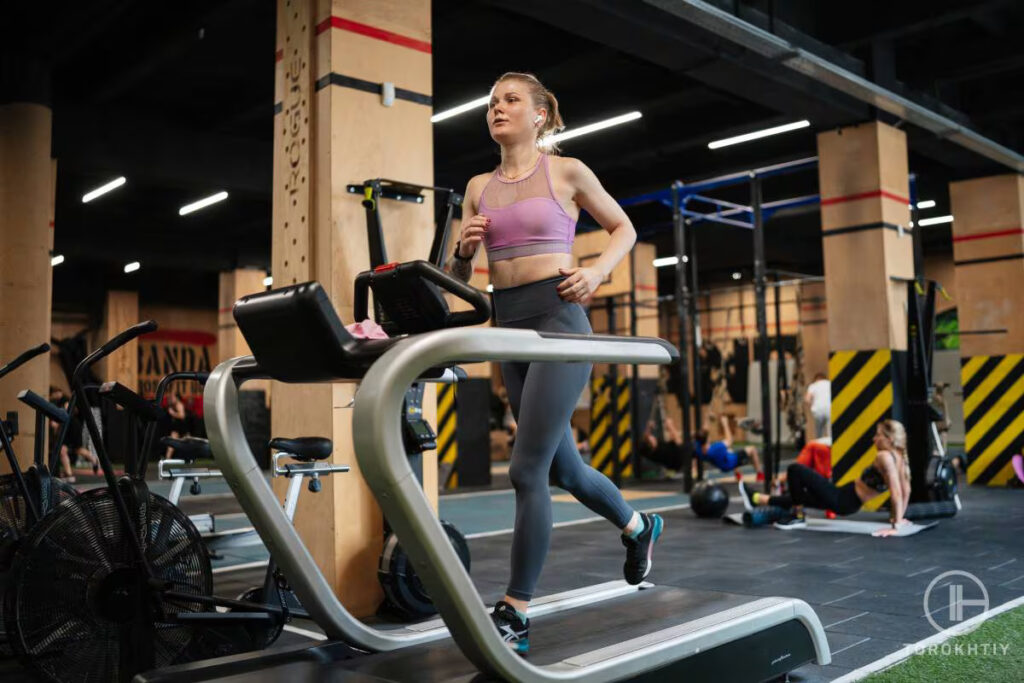
2. Find the Adjustment Bolts
Now that you’ve read the manual and turned the treadmill off, it’s time to find adjustment bolts. The majority of treadmills have two bolts and they’re usually in the back. These bolts control the tension. Some treadmills will make your life even easier and come with an auto-tension feature; this adjusts the tension automatically.
3. Check the Current Tension
After you’ve located the bolts (most treadmills have hex screws), you should check the current tension so you can see if the belt is too tight or too loose. A loose belt will slip and lag, and a belt that’s too tight will cause a lot of wear and tear on the motor. Should I be tightening a treadmill belt or loosening it? The answer is that it depends on how tense it currently is.
4. Adjust the Tension
Now we’re getting around to actually fixing the issue. If you want to increase the tension, turn the bolts clockwise. If you want to lower the tension, turn them counterclockwise.
5. Use the Right Tools
This is another reason to check that user manual – so you can see what tools the manufacturer recommends. You’ll most likely need an Allen wrench but check the manual just in case.
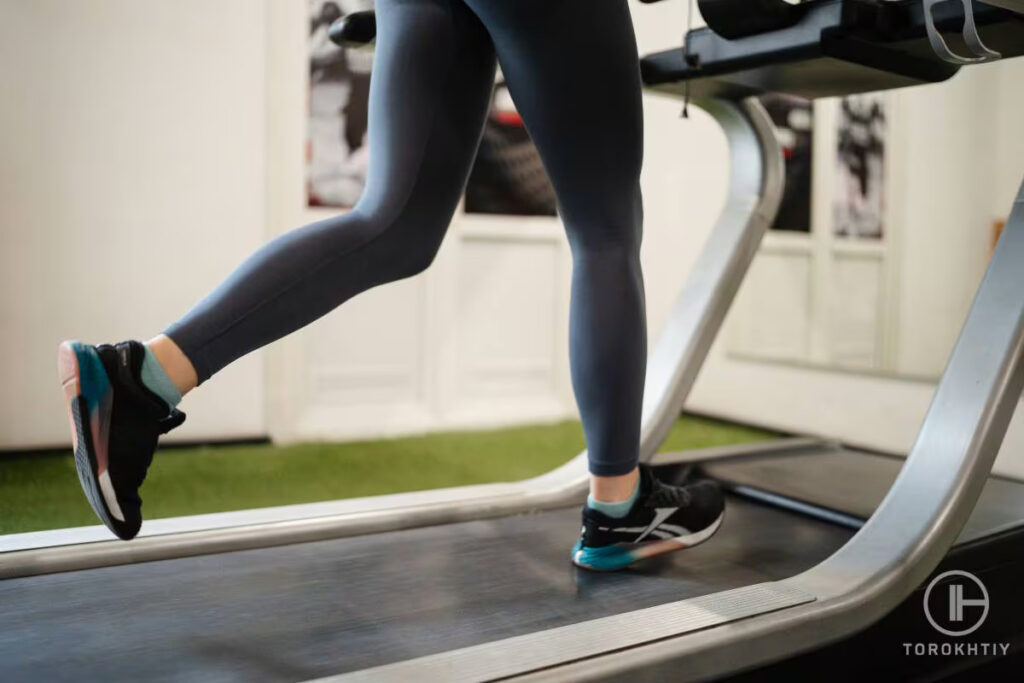
6. Stick With Small Adjustments
Adjust the tension little by little (about a quarter or half of the turn). This makes sure you won’t make the belt too tight.
7. Check the Alignment
The belt needs to be in the center of the deck so check if it’s centered or not.
8. Testing
Each time you make any adjustments, you need to test the treadmill to see if you’ve actually fixed the issue or not. Look out for any slipping, jerking or weird noises. If you don’t see or hear anything, you’re good to go. If you notice anything strange, go back and adjust the belt some more.
Treadmill We Recommend – ProForm City L6
If you don’t have a treadmill or want to upgrade, I would recommend this one. And the good news is – a brand-new treadmill doesn’t need any adjustments. So, you’re covered in this department.
This one was practically made for home gyms because it’s foldable so you can just tuck it in your closet after your workout. You know… If you don’t want it staring at you from across the room, reminding you to get off that couch and work out because today is not a rest day. The L6’s dimensions (70.25’’ L x 29’’ W x 44.5’’ H) certainly help with that.
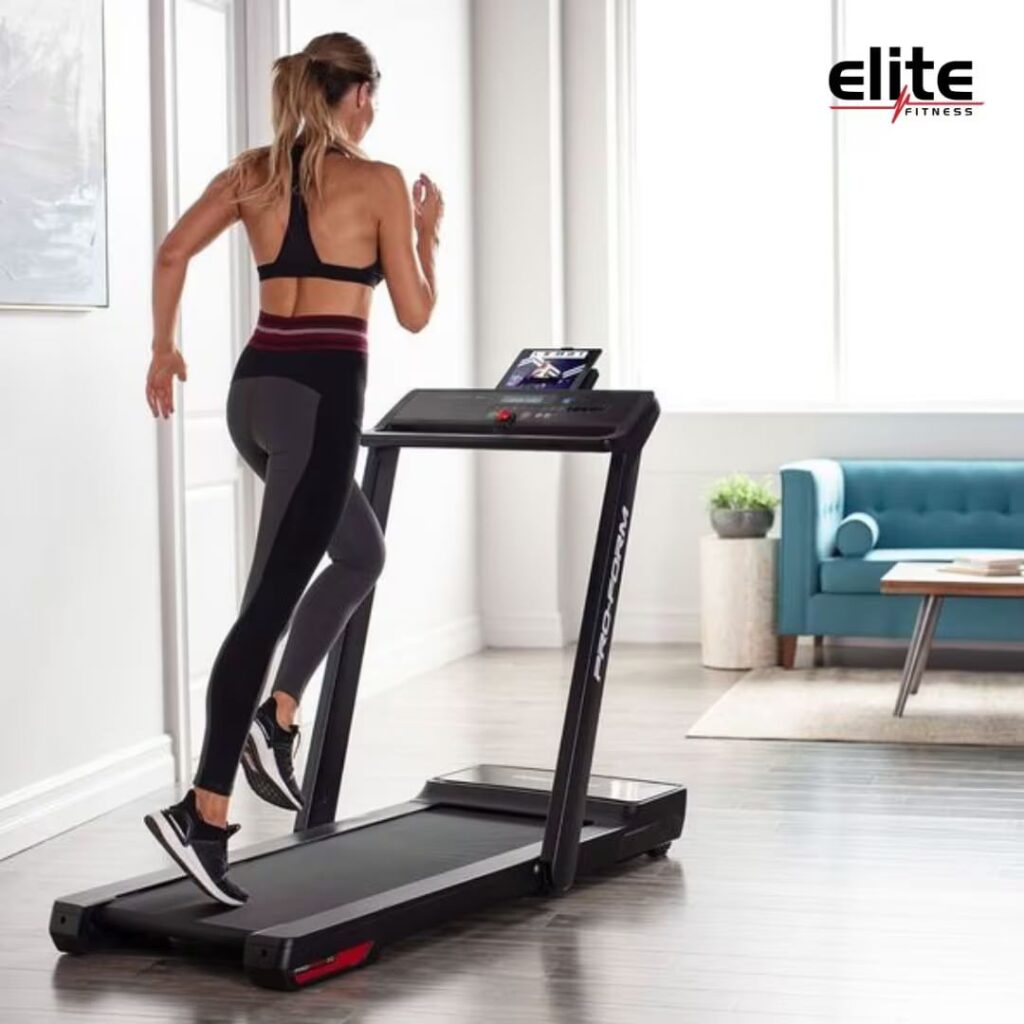
The surface you’re running on is another great thing about it because it’s low impact. This means that it’s nice to your hips, knees, and ankles and it’s good to use even if you have issues with your joints. The belt is 45’’ in length when wrapped around the running surface. It’s also 17.5’’ wide – which is plenty.
The speed of 0-8 MPH means it’s going to be a great workout for beginners, but it will also kick your butt with a more intense workout once you’re ready for it.
I do have a bone to pick with it, however. The screen is just too small, and there’s no way around it. I would really like it to be slightly bigger – that would up the entire workout experience.
Positives:
Could be better:
FAQ
Why Does My Treadmill Belt Keep Moving To One Side?
If your treadmill belt keeps moving to one side, it means its belt is not aligned properly. The bolts can be loose or unevenly adjusted. If you want to know how to fix a treadmill belt slipping to one side, you’ll be happy to know it’s pretty straightforward; check the bolts and make sure the belt is in the center of the deck. If you don’t know how to center your treadmill belt, you can check the user manual to find out.
How Do I Know if My Treadmill Belt Is Overtightened?
If the belt is too tight on your treadmill, you’ll notice it’s louder than usual, you’re having a hard time walking on it, and if you try running, it won’t go smoothly. The belt will probably feel really rigid and tight, and you may even notice a lot of wear on the motor.
Conclusion
Congratulations! Now you know everything there is to know about your treadmill’s belt. Not only do you know how to keep it in check, but you also know how to fix it.
You learned how tight a treadmill belt is supposed to be plus what happens if it’s loose. Now you can save your money and instead of paying a professional to fix your treadmill.
Are treadmill belt adjustments new to you, or did you already know how to make them before reading this article? Did you try the treadmill I recommended? And if you did, how do you like it? Share your opinions and tips! I’m off to grab my Allen wrench and make some adjustments!
Also read:
- How to Clean Treadmill Belt
- What Muscles Does Treadmill Work
- Beginner Treadmill Workout
- How to Lose Weight on a Treadmill
- How Many Calories Do You Burn on a Treadmill
- How to Fix a Slipping Treadmill Belt
- Best Foldable Treadmill
- Best Walking Pads for Under Desk
- Best Shoes for Walking on Treadmill
References:
- Treadmill benefits: Six reasons to jump on the running machine today // Livescience: https://www.livescience.com/treadmill-benefits
- Get smart about treadmills // Harvard: https://www.health.harvard.edu/staying-healthy/get-smart-about-treadmills
- Summary of outcome metrics from the modified graded treadmill // Researchgate: https://www.researchgate.net/figure/Summary-of-outcome-metrics-from-the-modified-graded-treadmill-test-GTT-Panels_fig2_323941760
- Types of screws // Housebeautiful: https://www.housebeautiful.com/home-remodeling/g25895027/types-of-screws/
- Guide to allen wrenches // Familyhandyman: https://www.familyhandyman.com/article/guide-to-allen-wrenches/
Why Trust Us?
With over 20 years in Olympic Weightlifting, our team does its best to provide the audience with ultimate support and meet the needs and requirements of advanced athletes and professional lifters, as well as people who strive to open new opportunities and develop their physical capabilities with us.
By trusting the recommendations of our certified experts in coaching, nutrition, dietology, and sports training programming, as well as scientific consultants, and physiotherapists, we provide you with thorough, well-considered, and scientifically proven content. All the information given in the articles concerning workout programming, separate exercises, and athletic performance, in general, is based on verified data. We ensure that you can rely on our professionals’ pieces of advice and recommendations that can be treated as personalized ones which will benefit you and fully meet your needs.
The product testing process is described in more detail here
Author: Ihor Shymechko
Pro Olympic Weightlifter, Coach
Best Results: Snatch – 208 kg,
C&J – 240 kg
Ihor has been a professional weightlifter since 1996, boasting over two decades of competition experience. His notable achievements include clinching the European Championship in 2009 and securing a silver medal in the 105kg division at the Senior World Championships in 2011. Ihor represented his country in the 2008, 2012, and 2016 Summer Olympics. After retiring from competitive weightlifting, he transitioned to coaching, leveraging his vast experience to guide athletes who now compete on both national and international stages.
Reviewed by: Oleksiy Torokhtiy
Olympic Weightlifting Champion
Best Results: Snatch – 200 kg,
C&J – 240 kg
Oleksiy Torokhtiy is a professional athlete boasting 20 years of experience in Olympic weightlifting. With multiple European and World titles under his belt, he has showcased his prowess in two Olympic Games (Beijing 2008 and London 2012). Upon concluding his illustrious career, Oleksiy dedicated himself to coaching. By 2022, he had conducted over 200 weightlifting seminars worldwide. He is the visionary behind an international sportswear and accessories brand known for its motto, “Warm Body Cold Mind.” Additionally, he is an esteemed author and the creator of a series of training programs and eBooks.


